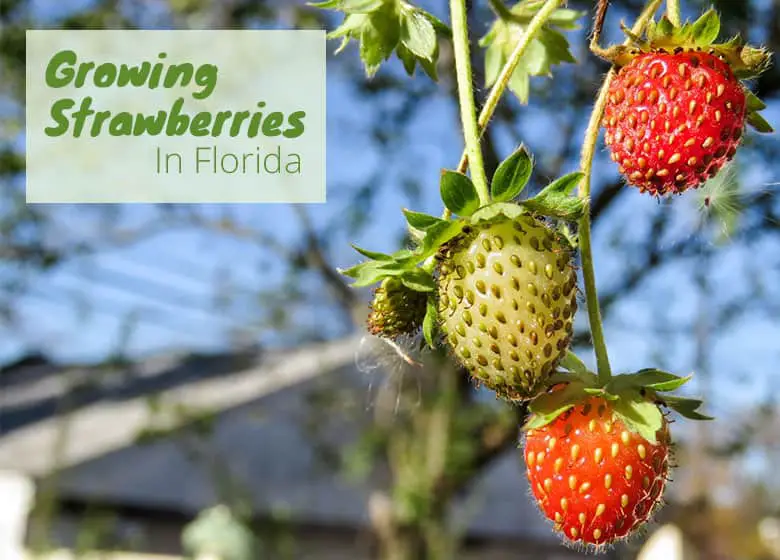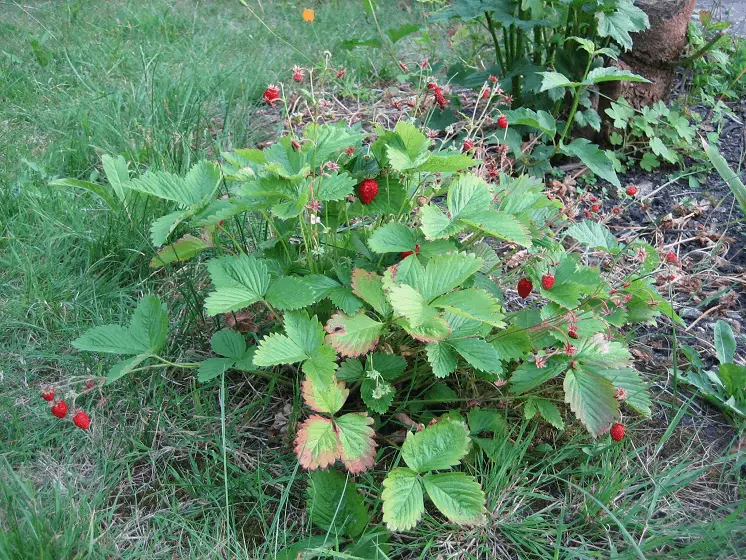
We have a festival dedicated to them, it must be easy to grow strawberries in Florida, right?
The best time to grow strawberries in Florida is in the early fall. These are the months of September and October. Strawberries are most commonly harvested in February and March in Florida. Some of the best varieties of strawberries to grow in Florida are Camarosa, Chandler, Festival, Oso Grande, and Selva.
Strawberries are relatively easy to grow in Florida as long as you plant them at the right time and in the right conditions. Read on to learn all you should need to know to start growing strawberries in Florida.
What is the best time to grow strawberries in Florida?
The best time to grow strawberries in Florida is in the early fall. This is slightly differnt for each part of the state.
| North Florida | September – October |
| Central Florida | September – October |
| South Florida | October – December |
Its best to plant buy transplants from your local nursery and get them into the ground at the above dates. If you live in south Florida, early December is the latest you should think about planting.
In most places strawberries are a warm season crop but Florida has different gardening rules than the rest of the united states. The Ideal growing climate for strawberries is between 50F – 80F.
What Are The Best Varieties Of Strawberries To Grow In Florida
There are a lot of different varieties of strawberries out there. Not all of them will grow well in Florida. Some of the best varieties to grow in Florida are:
- Camarosa
- Chandler
- Festival
- Oso Grande
- Selva
If you live in North Florida try growing Camarosa. If you live in Central Florida try growing Festival, Some gardeners from those areas have reportedly had pretty good luck with those varieties.
The university of Florida has a fantastic breeding program and they are always coming up with new varieties of strawberry specifically for growing in Florida’s climate.
How To Care For Strawberries

Plant strawberries in a spot that gets full sun (at least 8 hours) in soil that has been fertilized and has good drainage. While strawberry plants do enjoy regulalr watering, their roots do not like to be kept soggy.
Strawberry flowers and fruit get damaged at 32F. The leaves and roots of the plants can withstand temperatures of down to 21F. Those in south and central Florida don’t really have much to worry about here.
Those in north Florida should cover their plants if they do think a cold front is rolling through. I’ve used these plant blankets before and they have worked well. they a really big and a perfect size for the typical raised bed.
Each strawberry plant needs at least 10 -18″ of space in between each other. So two rows of 6 strawberries each (total of 12 plants) will need at least a space of 20″ x 60″.
When Do You Harvest Strawberries In Florida
Strawberry plants typically take 90 – 110 days in order to produce fruit that is ready to harvest.
The typical harvest months are February and March. This is right around the time of the state famous strawberry festival.
When harvesting strawberries, be sure to pick the berry before it is fully red. If you allow the berry to stay on the plant until it is completely red, the berry will go bad very quickly.

It’s best to harvest when the berry turns 3/4 red. Berries will ripen quickly and you should be checking your plants daily when the time for harvest comes. Your berries will only store in the fridge for a few days, maybe a week max, after picking. If you need to store them for longer you can freeze them for later use.
How To Fertilize Strawberries
Strawberry plants will benefit from a well balanced fertilizer. Any common vegetable bed fertilizer will do the trick. I like to have something with a good amount of nitrogen and potassium, but i want it to have more phosphorous than both of those. Something like a 3-4-2 is great, in my opinion.
The three numbers represent the N-P-K value, this is the amount of nitrogen (N), Phosphorous (P), and Potassium (k) the fertilizer blend has. Each nutrient helps your plant in different ways.
Nitrogen helps your plant make new green, leafy growth. Phosphorous helps your plant produce more flowers and fruit, and potassium is a good general health booster of your plant.
Common Pests and Diseases of Strawberries
The most common pest that you will probably have to deal with is birds. They come down and steal your fruit or damage it enough to where you can’t enjoy it. You can stop them from eating your berries with simple netting.
Other pests are spider mites, caterpillars, and aphids. The best defense to a bug attack is a diverse garden. The more plants the better chance you have of warding off the bad bugs from the garden.
If you need to control these pests with a spray, the best options are neem oil for the aphids and mites. For caterpillars, B.t. is a good option as well, but be sure to spray in the evenings when bees are less active. Even though both of these options are organic that doesn’t mean they won’t kill bees.
Avoid planting strawberries in spots where you know plants have been killed by verticillium wilt. You might also see powdery mildew pop up on your plants, you can battle this with a common copper fungicide spray which you can pick up at your local home depot or lowes.
How to grow a strawberry plant in Florida
- The best time to plant strawberries in Florida is in the early fall, this is the months of September through October.
- The best varieties of strawberries to grow in Florida are Camarosa, Chandler, Festival, Oso Grande, and Selva.
- Plant strawberry plants in Full sun, well-draining soil and at least 10-18″ of space between plants.
- Strawberries are ready for harvest between February and March.
- Fertilize with a well-balanced fertilizer, something like a 3-4-2.
- Watch out for pests like aphids, birds, caterpillars, and mites.
You Might Also Be interested In:

Varieties and planting times obtained through the recommendation of the University of Florida IFAS website.

